HAPPY GRILLING
This is the place to be for all your grill needs!
Carl's "FixIt Manual" is available free through the menu option at the top.

If you have an immediate question about gas grill repair-
email Carl at:
This email address is being protected from spambots. You need JavaScript enabled to view it.
Please understand that Carl is an active part of www.clagrills.com(which offers gas grill parts) and is very busy in the spring and summer. Carl will get back with you as soon as he can! Usually within 24 hours.
Converting your grill to LP or Natural Gas
Matching Orifices
When you decide that you want to convert your grill to LP or Natural Gas you have the task of finding the correct orifice to replace the old ones. I don't recommend ordering any without pulling the old ones and making close comparisons before ordering. Occasionally a website will recommend a particular orifice to fit certain models but I still recommend that you pull an old one and try to make a close comparison. I have chapters on this site for converting from Natural to LP and from LP to Natural. Look them over well before beginning, unless you're a technician.
If you're converting Weber or Ducan from Natural to LP, PLEASE NOTE, that the grill won't function normally unless you change the valves to the LP valve. CLA has only one Weber valve and the factory won't help you with this. There are several Weber valves so compare closely before ordering. There is only one Weber aftermarket valve that I know of on our site. CLA has the Ducan (older model) valves for LP usually listed with the model number page. If you just change the orifices when converting to LP from Natural you will find that when turning the grill valves to a low setting the fire is too hot as if it is still set on high or medium. If you don't want to buy the valves you can adjust for this problem by using fewer burners and cooking around them. You can also try adjusting the burner knob between the off and high position BUT this could result in the valve being set too low and the flame blowing out leaving the gas running without flame-SOME DANGER is possible if that happens. So practices and be sure if you try this. SAFETY ALWAYS!.
If you've pulled the orifices get a tape measure to determine the thread diameter. This is the most important step in replacing the orifices. If you're not sure how to get to the orifices, look at the LP-Natural conversion chapter. Or, on any of the other chapters as you might be able to get the orifices out by removing just the burners. You might have to remove the valve assembly. Take your time and study carefully. You may be past your skill level, and if so, call a technician.
Once you've pulled the orifice and can place it on a tape measure, you can compare to the pictures below (which represent all of the aftermarket orifices CLA has). Study carefully, the thread diameter is critical. It’s unlikely that you would have identical thread diameters but a different thread count. The length of the orifice could make a difference as it must be at least 1/8 inch inside the burner when the burner is mounted in the grill. I've tried to note the thread diameters in mm while showing the orifice on a standard tape measure to help with the comparison.
 CLA #31300 orifice, 6 mm hex head, 4.9mm thread diameter
CLA #31300 orifice, 6 mm hex head, 4.9mm thread diameter
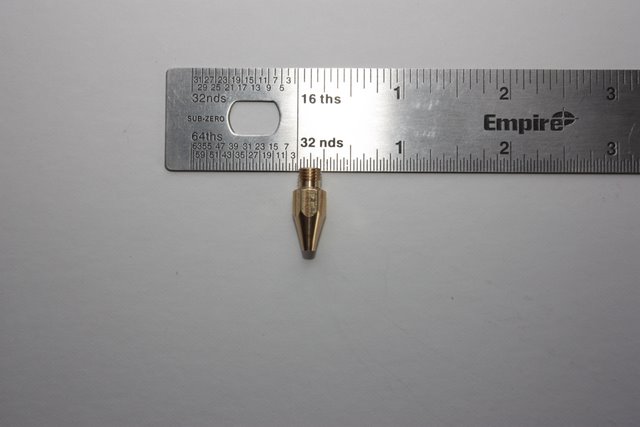 CLA #31400 orifice, 6mm hex head, 5.85 thread diameter
CLA #31400 orifice, 6mm hex head, 5.85 thread diameter
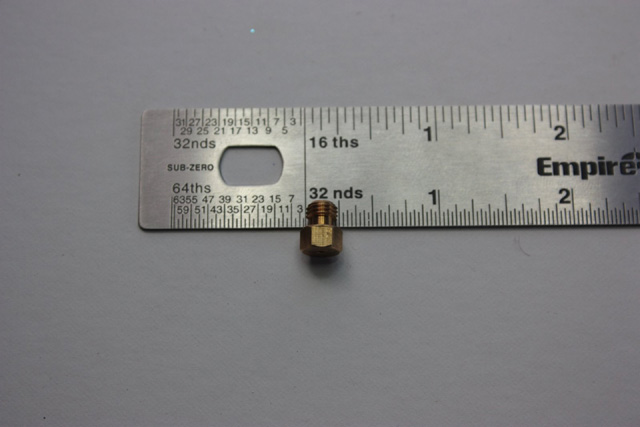
CLA #31500 orifice, 7mm hex head, 5.9 thread diameter
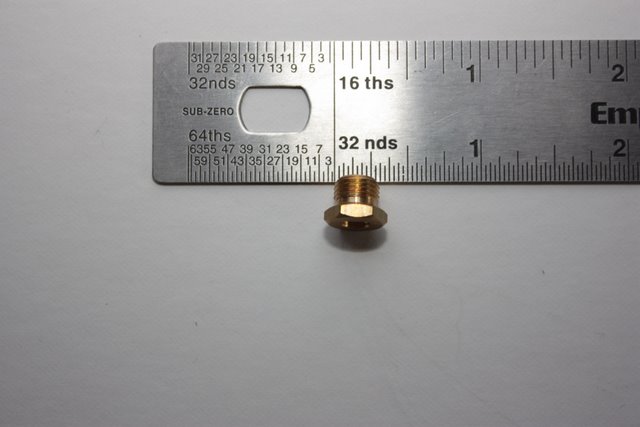 CLA #31600, 3.8 hex head, 5/16 thread diameter, 32 thread count
CLA #31600, 3.8 hex head, 5/16 thread diameter, 32 thread count
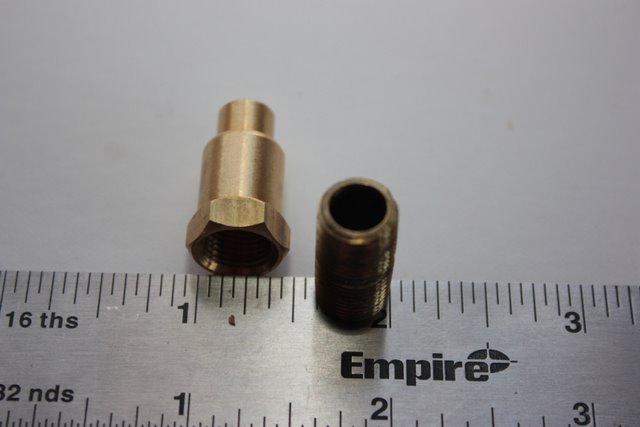
CLA 31700, 7/16 hex head, approx 3/8 inch thread diameter (1/8 NPT standard thread) next to a male fitting, same size, to help make the comparison
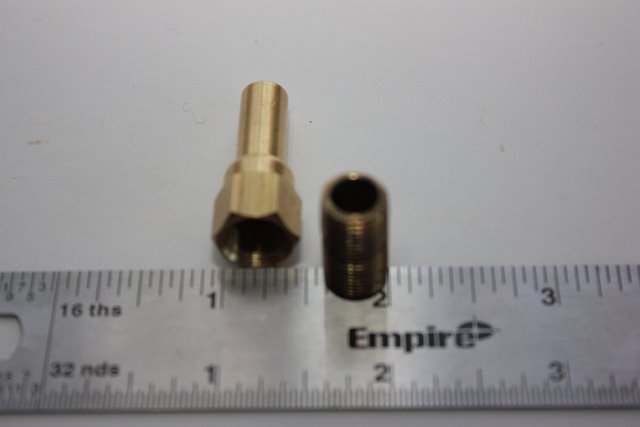
CLA 31800, 7/16 hex head, approx 3/8 inch thread diameter (1/8 NPT standard thread) next to a male fitting, same size, to help make comparison
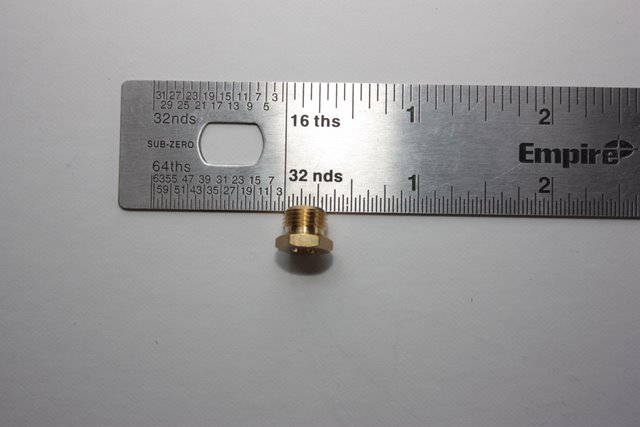
CLA #33200, 3/8 hex head, 11/32 inch thread diameter- 32 thread count
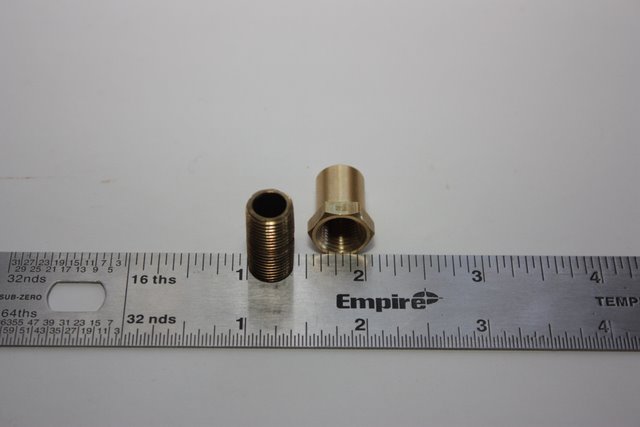
CLA #37900, 1/2 hex head, approx 3/8 thread diameter (1/8NPT standard thread) next to a male fitting, same size to help make the comparison

